Two-Wheel Drive: Chinese Pad Printer, Low-Altitude Economy & Transformation
[Abstract] Driven by technological innovation and market demand, the Chinese pad printer is widely used in electronics and automotive parts manufacturing. Meanwhile, the rapidly low-altitude economy benefits from policy support, technological innovation, and robust industrial chain development. By 2026, its market value could exceed 1 trillion yuan in China. Despite operating in different fields, they complement each other: pad printing aids in aircraft manufacturing, while the low-altitude economy offers new growth opportunities.

In the global economic landscape of the 21st century, technological innovations and the rise of emerging industries are driving social progress and economic development at an unprecedented pace. Chinese Pad Printer, as precision equipment in the manufacturing industry, and the recently spotlighted low-altitude economy, although seemingly belonging to different domains, jointly paint a magnificent picture of deep integration between technology and industry. This article aims to explore the latest advancements in Chinese pad printing machine technology and their applications in manufacturing, while analyzing the rise of the low-altitude economy, its market potential, and its impact on economic society. It reveals the complementary roles of both in promoting economic transformation.
I. Chinese Pad Printer: Precision Tools in Manufacturing
Chinese Pad Printer, these seemingly unremarkable production equipment, play a pivotal role in manufacturing. Based on photo lithographic technology, they transfer images and text from a steel plate to the substrate through a specially made silicone printing head. This process is precise, efficient, and flexible, widely used in electronics, automotive parts, plastics, metal products, and other industries. According to industry reports, the global market size for Chinese Pad Printer exceeded $1 billion in 2023 and is expected to grow at an average annual rate of 5% over the next five years, driven by increasing demand for high-precision, high-efficiency printing in manufacturing.
Technological Innovation Leads Development: From initial manual operation to today's automated, intelligent production, Chinese Pad Printer have undergone several technological innovations. Modern Chinese Pad Printer not only have monochrome and multicolor printing capabilities but also can achieve continuous printing of up to 12 or more colors, greatly enriching the visual expression of products. Additionally, by integrating advanced technologies such as the Internet of Things and big data analysis, Chinese Pad Printer can achieve remote monitoring, fault prediction, and other functions, further enhancing production efficiency and equipment utilization.
Market Demand Drives Upgrades: As consumers increasingly pursue product quality and design, personalized customization has become a new trend in manufacturing. Chinese Pad Printer, with their flexible and versatile characteristics, can meet various needs from small-batch trials to large-scale production. Especially in fields such as 3C products, beauty packaging, and automotive interiors, the high-precision printing capabilities of Chinese Pad Printer have become key to differentiated competition.
Environmental Protection and Sustainable Development: In the face of global environmental pressure, the Chinese pad printing machine industry is also actively exploring green printing technologies. By adopting eco-friendly inks, optimizing printing processes, and improving material utilization rates, it not only reduces production costs but also minimizes environmental pollution, aligning with sustainable development requirements.
II. Low-Altitude Economy: The Blue Ocean Market of Emerging Industries
The low-altitude economy, as a new economic form relying on low-altitude airspace and manned and unmanned aerial vehicles as its core, is gradually becoming a new engine of global economic growth. According to predictions by the National Low-Altitude Economy Integration and Innovation Research Center, China's low-altitude economy market size is expected to exceed RMB 1 trillion by 2026, with an average annual compound growth rate exceeding 30%.
Policy Support and Industry Planning: In recent years, the Chinese government has attached great importance to the development of the low-altitude economy, issuing a series of policy measures, including reforms to low-altitude airspace management and unmanned aerial vehicle industry development plans, providing a solid policy guarantee for the rapid rise of the low-altitude economy. As of early 2024, more than 20 provinces (municipalities, autonomous regions) have included "low-altitude economy" in their government work reports, demonstrating the strategic orientation at the national level.
Technological Innovation and Application Expansion: The core of the low-altitude economy lies in technological innovation and the expansion of application scenarios. Taking eVTOL (electric vertical take-off and landing aircraft) as an example, these aircraft, with their low noise, low emissions, and high efficiency, are seen as important solutions for future urban air transportation. According to industry analysis, China's eVTOL market size is expected to reach nearly RMB 10 billion by 2026, mainly applied in urban commuting, logistics transportation, emergency rescue, and other fields.
Industry Chain Construction and Collaborative Development: The development of the low-altitude economy does not only rely on the progress of a single technology but also requires close cooperation and collaborative development among upstream and downstream industries. From raw material supply, core component manufacturing, aircraft assembly, to operational services, every link is crucial. Currently, China has initially formed a complete industry chain covering unmanned aerial vehicle manufacturing, aircraft maintenance, airspace management, flight approval, etc., laying a solid foundation for the sustained and healthy development of the low-altitude economy.
III. Complementary Coexistence Between Chinese Pad Printer and the Low-Altitude Economy
Despite belonging to different fields, Chinese Pad Printer and the low-altitude economy exhibit significant complementary in promoting economic transformation. On the one hand, Chinese Pad Printer, as precision tools in manufacturing, provide high-quality, efficient printing solutions for aircraft manufacturing and component labeling in the low-altitude economy. For example, the identification and patterns on drone shells, battery packs, controllers, and other key components are often achieved through pad printing technology. On the other hand, the rapid development of the low-altitude economy also brings new market opportunities to the Chinese pad printing machine industry. With the popularity of drones, eVTOLs, and other new aerial vehicles, the demand for high-precision, high-reliability printing technology will continue to grow, creating new growth points for the Chinese pad printing machine industry.
Chinese Pad Printer and the low-altitude economy, as typical representatives of technological and industrial innovation, are jointly promoting the optimization and upgrading of China's economic structure. In the future, with continuous technological advancements and market expansion, the synergistic effect between the two will become more significant, contributing to the construction of a high-quality modern economic system.

